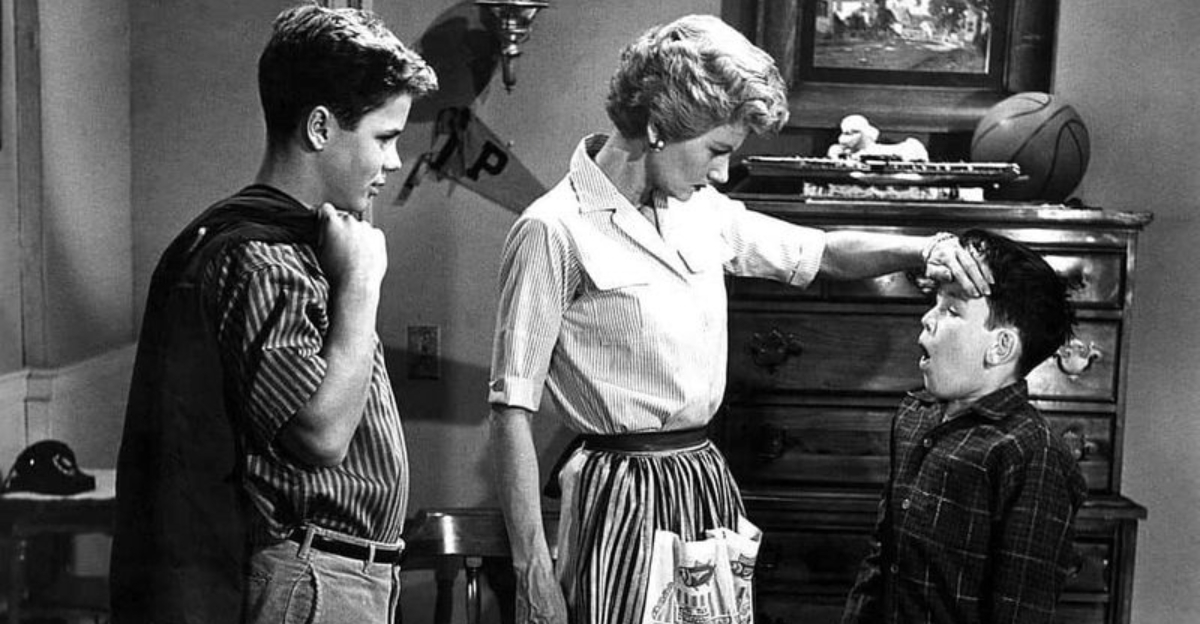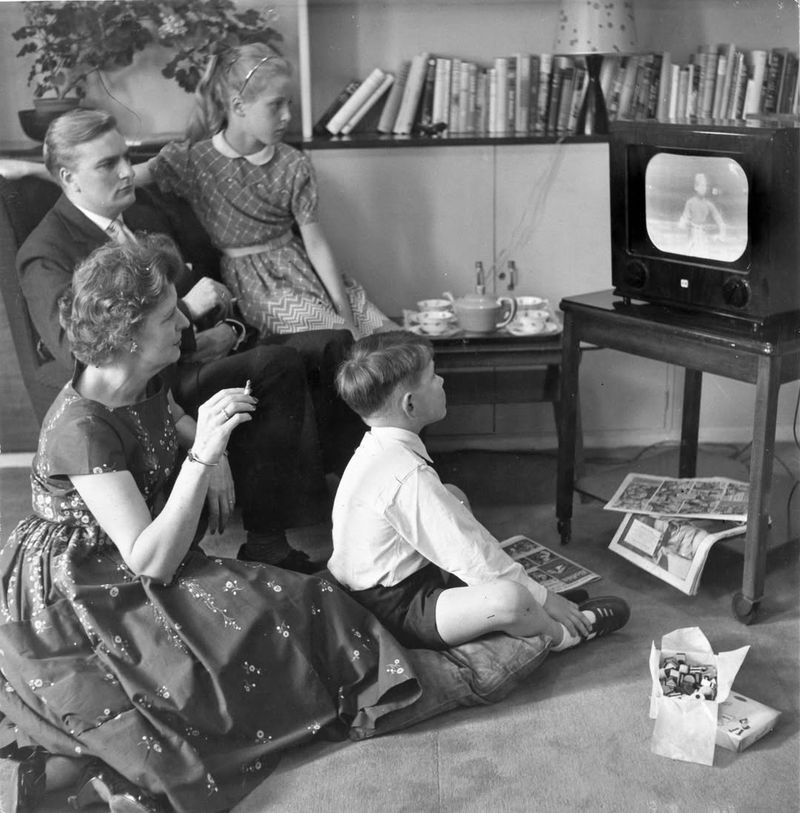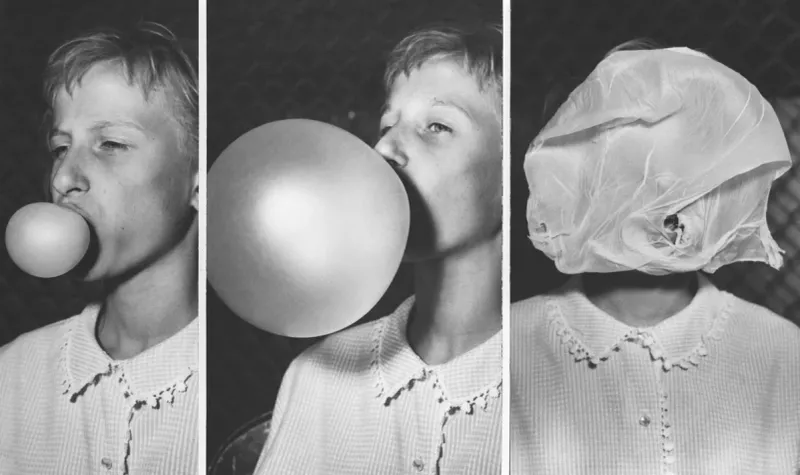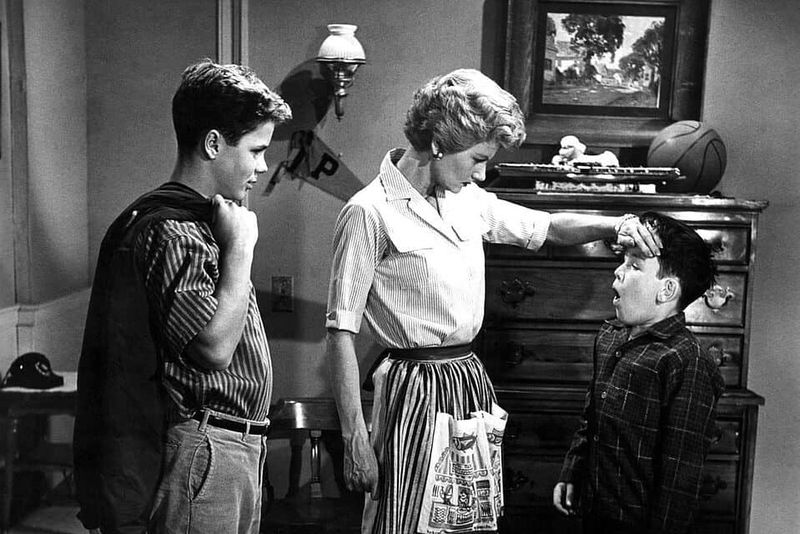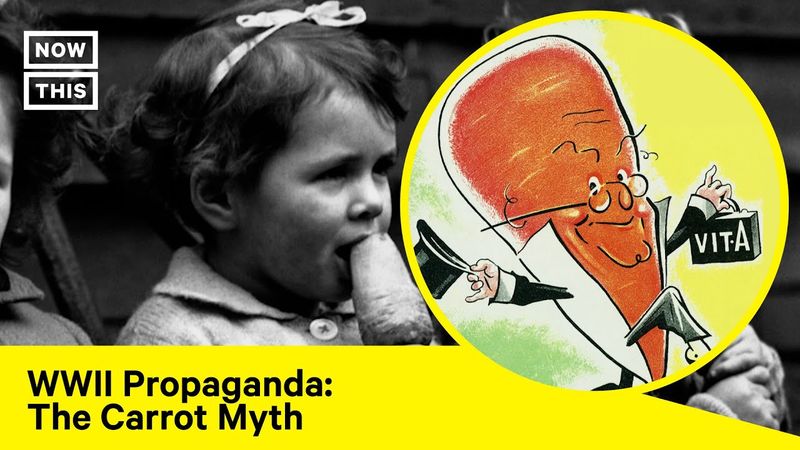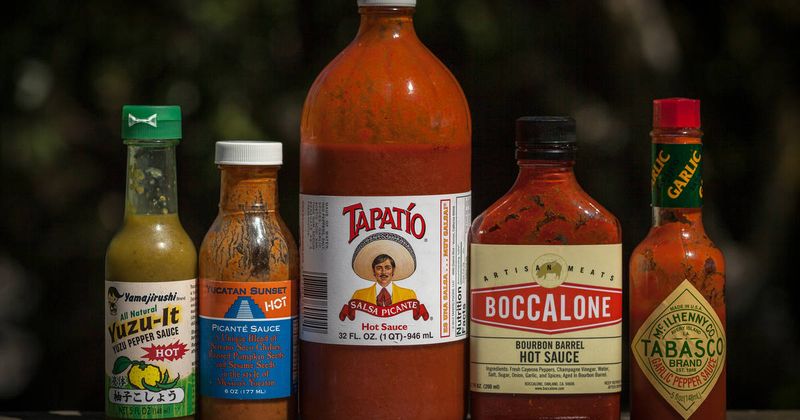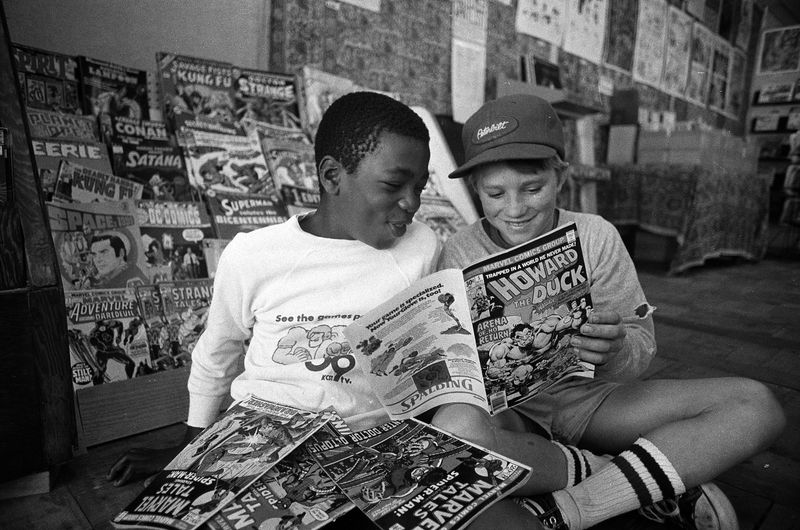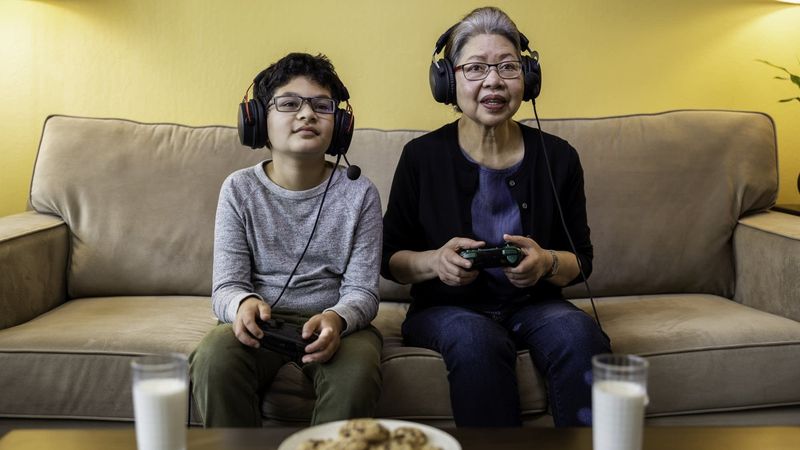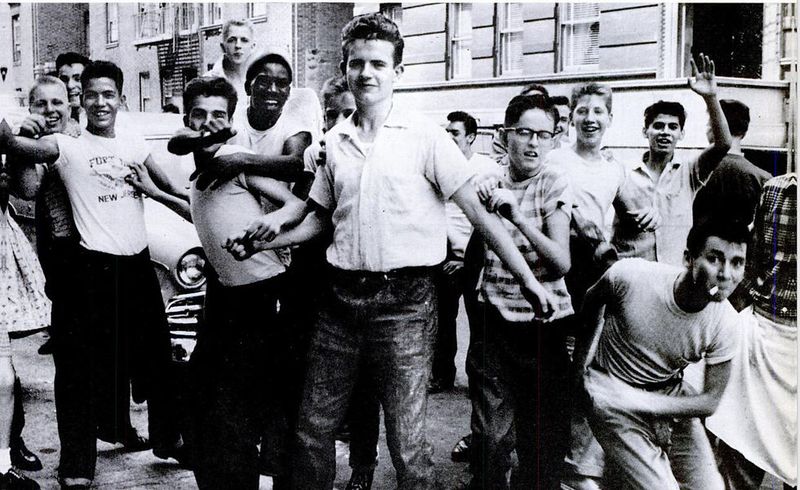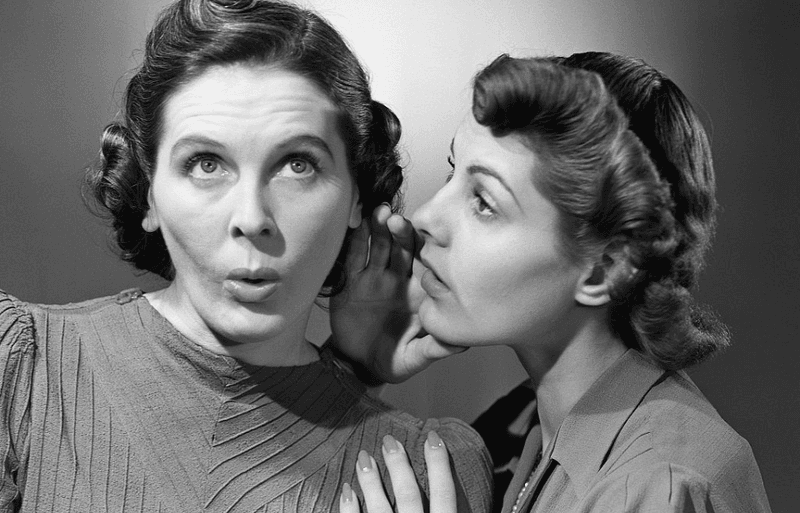In the 1950s, parents were full of advice and warnings, many of which seemed like gospel truth back then. However, as time passed, a lot of these dire warnings turned out to be nothing but myths. From food habits to lifestyle choices, let’s explore 17 things that every ’50s kid was warned about that turned out to be totally wrong. Join us on a nostalgic journey with a modern twist as we debunk these amusing misconceptions.
1. Sitting Too Close to the TV
“Don’t ruin your eyes!” Every ’50s kid heard this whenever they inched closer to their favorite television program. Parents were convinced sitting too close to the TV would harm eyesight. This cautionary tale was more about enforcing discipline than reality. Modern ophthalmologists assure us that while sitting close might cause temporary eye strain, no permanent damage occurs. The real issue was the TV’s low resolution and flickering images, which could tire young eyes. These days, kids are glued to screens of all sizes, yet eye health remains largely unaffected. The real lesson? Moderation and breaks are key. Interestingly, advancements in television technology have rendered this warning obsolete, yet it remains a charming relic of a bygone era.
2. Cracking Knuckles Leads to Arthritis
If there was one thing parents in the ’50s were sure about, it was that cracking knuckles would lead to arthritis. This myth was passed down with hushed seriousness at dinner tables. However, contemporary medical research has debunked this belief. The popping sound is merely gas bubbles bursting in the joint fluid, and there’s no evidence linking it to arthritis. While excessive cracking might annoy those around you, it remains harmless to your joints. So, go ahead and crack away without fear! In a world where old habits die hard, some myths persist, but science offers clarity and relief.
3. Chewing Gum Stays in Your Stomach for Seven Years
“Swallow gum and it’ll stay in your gut for seven years!” This ominous warning echoed through playgrounds and lunchrooms alike. Yet, it was more fiction than fact. While it’s true that gum isn’t digested like other foods, it doesn’t linger for years. The body efficiently moves it along through the digestive tract, expelling it without drama. Such tales were likely intended to curb a sticky habit rather than instill fear. Today, kids chew worry-free, but the myth lives on as a testament to the colorful tapestry of childhood lore passed down through generations.
4. Going Outside with Wet Hair Causes a Cold
Mothers in the ’50s insisted that wet hair outdoors meant a certain cold. This piece of advice was repeated countless times, often in futile attempts to keep children warm and dry. Yet, it’s merely a preventive tale. Colds are caused by viruses, not wet hair, and outdoor air won’t increase their likelihood. This myth was a way to encourage better hygiene and warmth during chilly days. Today, science supports that a cold virus is the true culprit, making wet hair warnings a quaint reminder of simpler times and well-meaning parental concern.
5. Chocolate Causes Acne
“Avoid chocolate, or you’ll break out!” Teens in the ’50s received this advice with a mix of dread and defiance. While acne has many triggers, chocolate isn’t one of them, as dermatologists confirm today. The relationship between diet and skin health is complex, but chocolate, in moderation, doesn’t cause acne. This warning was perhaps a ploy to encourage healthy eating rather than demonize a beloved treat. Now, indulging in chocolate is guilt-free, though the myth still lingers in cultural memory, a testament to the evolving understanding of skin care.
6. Reading in Dim Light Ruins Your Eyes
“You’ll go blind!” was the dramatic warning given to any child daring to read by dim lamplight. This myth aimed more at encouraging proper lighting than real danger. Eye strain can occur, but it’s temporary and doesn’t cause long-term damage. With today’s understanding and improved lighting options, this warning feels quaint yet harmless. Encouraging proper lighting is good advice, but the panic was unwarranted. As we move towards e-readers and blue light concerns, this tale of yesteryear feels like a gentle nudge towards better habits, with no lasting harm done.
7. Swimming After Eating Causes Cramps
“Wait an hour before swimming!” This rule was fervently enforced after every summer picnic. Parents believed that swimming right after eating would lead to cramps or worse. However, no scientific evidence supports this notion. Moderate activity after eating is generally safe, and swimming is no exception. While a full belly might be uncomfortable, it won’t invite danger. Parents likely used this to ensure proper digestion and rest. Today, swimmers enjoy their time without the fear of this myth, though it remains a nostalgic echo of mindful parental guidance from the 1950s era.
8. Coffee Stunts Your Growth
“It’ll stunt your growth!” warned parents whenever a child reached for a sip of coffee. This myth prevailed in the ’50s, partly due to misunderstandings about caffeine’s effects. There’s no scientific proof linking coffee to growth issues. While caffeine isn’t recommended for children due to other health reasons, it won’t interfere with growth. Parents were likely more concerned about hyperactivity and poor sleep than height. As coffee culture grows, this myth stands as a quirky reminder of earlier cautionary tales, now debunked but not entirely forgotten by nostalgic coffee lovers.
9. Crossing Eyes Will Make Them Stay That Way
Every playful child was warned that crossing their eyes might result in permanent disfigurement. This myth was likely a humorous attempt to prevent silly antics rather than genuine concern. The truth is, eye muscles are resilient, and crossing them doesn’t cause lasting effects. Though it might give parents a scare, it’s perfectly harmless. In today’s world of Snapchat filters and expressive selfies, crossing eyes is just another playful gesture, proving that some myths were more about playful jest than true caution from anxious parents.
10. Eating Carrots Gives You Night Vision
“Eat your carrots, and you’ll see in the dark!” This was a favorite line to encourage veggie consumption. Originating from wartime propaganda, it exaggerated the benefits of vitamin A. While carrots support eye health, they won’t grant night vision. The myth persists as a charming way to boost vegetable intake. Encouraging good nutrition is always wise, but expectations should be realistic. Today, the myth endures as a playful nudge towards healthier eating, a delightful piece of family lore passed down through dinner tables and bedtime stories.
11. Swallowing Seeds Will Make Them Grow in Your Stomach
“Don’t swallow the seeds, or they’ll sprout inside you!” This warning filled children’s minds with vivid imaginations of plants growing from their bellies. However, seeds don’t sprout in stomachs; they pass through just like any other indigestible substance. This myth aimed at preventing choking hazards more than botanical fears. Parents used it as a whimsical deterrent. Today, the myth is often shared with a chuckle, illustrating how creativity and caution blend in parental advice. It remains a nostalgic story, fondly remembered by those who dared to believe.
12. Spicy Food Causes Ulcers
For kids in the ’50s, spicy food came with a side of cautionary tales about ulcers. The belief that spicy dishes caused ulcers was widespread, yet incorrect. Modern medicine reveals ulcers are often caused by bacterial infections or long-term use of NSAIDs. Spicy foods might irritate an existing ulcer but aren’t the cause. This myth likely stemmed from misinterpreted digestive discomfort. As culinary tastes evolve, spicy food is enjoyed fearlessly, with this myth now serving as a spicy tale of caution gone awry, adding flavor to family folklore.
13. Reading Comics Will Rot Your Brain
Parents in the ’50s feared comics would rot young minds, believing they offered nothing but frivolity. Yet, comics fostered imagination, creativity, and even literacy. This myth underestimated their cultural significance and educational potential. While moderation in entertainment is sound advice, comics were far from detrimental. They offered escapism and artistry wrapped in vibrant storytelling. Today, graphic novels thrive, proving that what was once seen as brain-rotting is now celebrated for its unique narrative power, challenging the myths that lingered in the corners of past parental concern.
14. Sugar Makes Kids Hyperactive
“Too much sugar will make you hyper!” This refrain echoed through parties and holidays, as parents tried to manage candy intake. The link between sugar and hyperactivity was assumed but never proven. Most studies show no direct correlation, although excitement and occasions might boost energy. Parents sought to moderate sugar for health reasons, not just behavior concerns, making it a caring, if misinformed, myth. Today, understanding of nutrition has grown, but the myth persists as a sweet reminder of earnest attempts to balance indulgence with mindful parenting.
15. Too Much TV Turns Your Brain to Mush
Television was the new frontier in the ’50s, and parents feared it would mush young minds. Concerns about screen time stemmed from worries over lost study hours and lack of physical play. Yet, TV was also educational and inspiring. Moderation was key, but the dystopian view of mushy brains was unfounded. Children’s programming grew to reflect educational values, counteracting early fears. Today, screen time still warrants balance, yet TV remains a cherished pastime, a symbol of familial bonding, creativity, and a medium that evolved beyond the myths of a cautious era.
16. Stepping on a Crack Breaks Your Mother’s Back
“Step on a crack, break your mother’s back!” This superstitious rhyme turned ordinary walks into playful challenges. Though entirely fictional, it taught kids to be mindful of their surroundings. The rhyme was a game, fostering creativity and imagination. It had no grounding in truth, merely serving as a whimsical distraction. Today, the rhyme endures as a nostalgic game, a playful relic of childhood whimsy, reminding us that some myths were more about fun and less about fear, fostering a sense of light-hearted adventure.
17. Sneezing Means Someone is Talking About You
In the ’50s, a sneeze sparked curiosity: “Someone must be talking about you!” This playful myth was part of cultural folklore, adding mystique to everyday life. While charming, it was a superstition without basis. Sneezes happen for various reasons, none involving gossip. It was more about adding a sprinkle of magic to mundane moments. Today, sneezes are more likely linked to allergies than whispered conversations, yet the myth persists, adding color to cultural narratives and keeping alive the playful spirit of speculative connections.
